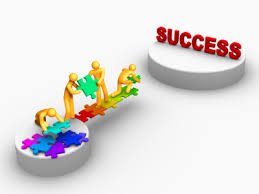The term Human Resource Development came into being when in 1970, Leonard Nadler published his book “Developing Human Resource” in which he coined the ‘Human Resource Development'(HRD).
The American Society for Training and Development defines HRD as, “human resource development is the process of increasing the capacity of the human resource through development. It is thus the process of adding value to individuals, teams or an organisation as a human system”. In simpler words, Human Resource Development is the part of human resource management that deals specifically with the training and development of the employees in the organisation. It includes training and development of a person soon after the person is recruited by the organisation, and new skills, job methods, the business working model, which provides the person the opportunity to learn and grow are taught, and thus complying with own goals as well as that of the organisation. The people become human resource only when they are competent to perform organisational activities.
Nature of HRD
1. It is a continous process and thus the value of human resource increases over time.
2. It is concerned with behavioral knowledge. The compentencies are developed through HRD programme.
3. It is a well integrated system.
4. It focuses on the all round development of human resources.
Importance of Human Resource Development:
1. HRD develops competent HR: HRD develops the skills and knowledge of the individual, hence it provides competent and efficient HR as per the job requirements, hence increases the human capital value.
2. HRD creates opportunities for career development and improves employee commitment: The development of the human skill, through constant training, increases the knowledge and opportunities for personnel to try hand at several other big opportunities. It also gives them an incentive of performance improvement. They feel committed towards the work and the organisation and are inspired to perform better.
3. Change Management: It facilitates planning, and management of change in an organisation. And also develops organisational health, culture and environment which leads to change management.
4. Training and development: Human resource conducts needs assessments for the organisation’s current workforce to determine the type of skills training and employee development necessary for improving skills and qualifications.
5. Overall company improvement: Human resource develops performance management systems. With a well developed human resource staff, the company’s performance and corporate image increases. Businesses want to be known as the “employer of choice.” Employers of choice are the companies that receieve recognition for the way they treat employees; they are companies for whom people want to work.
Hence HRD helps to develops the skills and competencies according to the changing business environment and is thus of immence importance to the firm.
I’ll be talking about major differences about human resource management and human resource development as well as talk a little about personnel development in the next upcoming articles.





15 Comments. Leave new
Nice article
Thanks rahul.
A good one and i totally second you meghna that unless the human resource of the country is not helped to discover and explore their latent talents by honing their skills,then progress of our land would surely remain a far-fetched dream!
So true arshdeep! Glad you liked it.
Very well u have covered almost everything! Goos job!
Thank youjuhi!
Very well u have covered almost everything! Good job!!
Appreciable work
Thanks rishika!
A good article .
Thank you abhishek!
I second you Meghna
thankyou aikankshi!
very nice!
the article is structured very well !
the importance of Human Resource Development is explained very well !
good work !